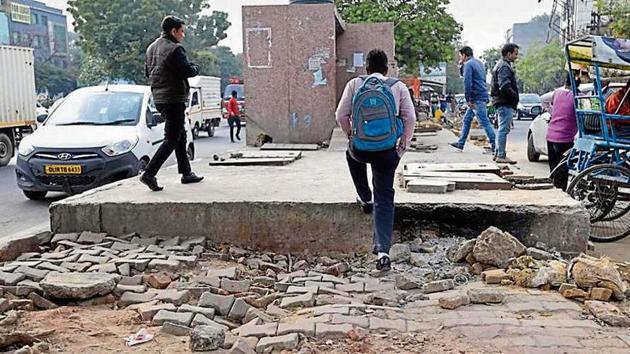Take these 3 steps to make Delhi walkable
In India, being able to walk safely and conveniently in cities is a rarity, in fact many a times risky. The 2011 Census revealed that a third of Indians walk to work, making it the largest mode of commuting.
Ask someone about an example of a great city, more often than, the answer will be that of a walkable city. In most circumstances, in addition to being pedestrian friendly, the city would be safe, prosperous, clean and one that offers a high quality of life. This is because these cities have realised that investment in walking infrastructure have benefits which are beyond just meeting the mobility needs.

In India, being able to walk safely and conveniently in cities is a rarity, in fact many a times risky. The 2011 Census revealed that a third of Indians walk to work, making it the largest mode of commuting. The Census also revealed that walking is the predominant mode of reaching the workplace even in cities.
In Delhi, around 25% of the population walks to work and less than 15% uses cars. But almost 95% of the infrastructure is dedicated to these 15% users, while pedestrians are left to manage on their own. The result is that half of 1,500-odd people who die on Delhi roads in accidents are pedestrians.
So, why this disconnect? Can we make Delhi walkable? Let me highlight three things doing which the objective can be achieved.
Highways are meant for the movement of motor vehicles while city roads or streets are meant for the people. Therefore, designing of streets is completely different from that of highways. Delhi needs to design its streets for multimodal throughput. This means allocating space for other modes, especially walking. Therefore, all roads in Delhi should be continuous and have walking infrastructure with no breaks and impediments. All footpaths should have a bare minimum width of 1.8 metres in residential areas. In commercial areas, it should be minimum 2.5 metres, preferably closer to 5 metres to accommodate all uses. In addition, streets should have additional “buffer space”, aside from walking paths, to accommodate trees, utility boxes, bus shelters, etc. The height of footpath should not be more than 15 centimetres and be designed to prevent parking on them.
Pedestrians are like water. They tend to find the shortest route to cross a road. Will water go up and down to cross a road? Surely not. But then why do we expect pedestrians to use foot overbridges and underpass for crossing roads? Delhi needs to develop pedestrian crossings that are intuitive for people to access. Yes, there may be high speed roads that may warrant grade separated facilities but those should be exception and not the rule. In addition, all intersections should have a pedestrian phase, meaning a red signal phase for allowing only pedestrian movement. Plus, medians should have a waiting space of at least 1.2 metre x 1.2 metre to aid pedestrians while crossing the road. All the crossings should also have a wheel chair accessible ramp.
By design, streets should be safe, engaging and lively. They should encourage more people to walk. This can be done by incorporating placemaking aspects while choosing pavement material, shading, lighting, signage, street furniture, public art, etc. It is also important to plan the edges of the street in the right manner. Porous edges encourage interaction of pedestrian with the surroundings. Activities that run majority of the time during the day like cafés, eateries, etc should be promoted at street level while those that have limited use can be shifted to upper levels.
Cities such as New York have shown that it is possible to change your city streets for the better. The benefits of this change are immense and not expensive as well. Therefore, transforming Delhi into a walkable city is not impossible. What we need is that city planners and decision makers should pay equal attention, if not more, to the people on foot, as much as they care about those behind the wheel.
(Amit Bhatt is the director, integrated urban transport, WRI India)
Stay updated with all top Cities including, Bengaluru, Delhi, Mumbai and more across India. Stay informed on the latest happenings in World News along with Delhi Election 2025 and Delhi Election Result 2025 Live, New Delhi Election Result Live, Kalkaji Election Result Live at Hindustan Times.
Stay updated with all top Cities including, Bengaluru, Delhi, Mumbai and more across India. Stay informed on the latest happenings in World News along with Delhi Election 2025 and Delhi Election Result 2025 Live, New Delhi Election Result Live, Kalkaji Election Result Live at Hindustan Times.






